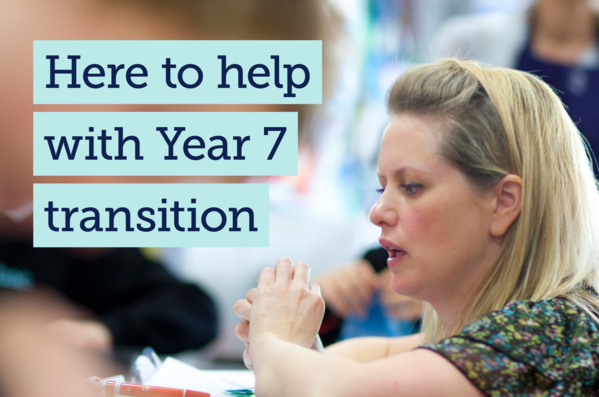Provided nothing changes between now and then, we are all due back into school in September. How that will look practically will vary from school to school as we all figure out how to make routines that work in our unique settings given the constraints imposed upon us for public health. Jemma Sherwood shares a few ideas for a smooth transition from Year 6 to Year 7.
Within those constraints and routines, we maths teachers have our own parts of the jigsaw to figure out, the most important of which is picking up on the learning of our students over the previous six months: figuring out where to start, what to reteach and how to structure our time so that any negative knock-on effect is minimal.
Fortunately, we’re very good at this: it’s our job. While the DfE tells us that, “For pupils in year 7, it may be necessary to address gaps in English and maths by teaching essential knowledge and skills from the key stage 2 curriculum”, we already know that we can only ever build on what students have learned and many KS3 curricula already work with the essentials from KS2.
Our new Year 7s will have missed about a term of Year 6, but some of that time would, in a normal world, have been revision for SATS. At a rough guess, they will have missed out on face-to-face teaching of about half a term’s content. That’s not insurmountable by any stretch. We will still have students coming to us who have pretty much mastered the Year 6 curriculum, but I expect we will find a greater proportion of students with gaps in their knowledge than we are used to.
At the risk of teaching you how to suck eggs, I have a few pointers to share and things to bear in mind for the new year with Year 7.
Be prepared for more students with gaps in their knowledge than you normally have.
We all have schemes of work for Year 7 that address things learnt in Primary school: arithmetic, fractions, decimals, basic statistical graphs and geometry. If your department sets your students and uses adapted schemes for certain sets, then you may find that you have more students following this adapted scheme. If you teach the same scheme to all classes and differentiate for different groups of students via the level of depth or challenge of tasks, you may find that there are more students working on a lower level of challenge at first.
Don’t be afraid to do some assessment to help you see where the students are at.
Assessment isn’t the enemy. Low-stakes quizzes and analysis, to help you see where the gaps are, is invaluable. If you know what the students are fluent in and what they need more practice at you can adapt your curriculum accordingly.
If you need some resources in this area, OUP’s Discovering Mathematics has some start of KS3 baseline assessments for this purpose.
Keep things structured and planned.
Don’t be tempted to try and plug the gaps ad hoc: a lesson on multiplying fractions, then a lesson on long division, then a lesson on bar charts. In most cases you should be able to keep your curriculum as it is and spend a little time on the missing prerequisites before starting the completely new learning. As much as ever, these new Year 7s deserve a structure and sequence that builds up their knowledge in a coherent way.
Think carefully about the way you teach topics, not just the topics you teach.
The delivery of mathematics in many Primary schools looks different to that in many Secondary schools. This is to be expected, as we deliver mathematics in the most appropriate way depending on the topic. However, there is one area becoming embedded in Primary that many Secondary schools are not yet aware of: the use of manipulatives. Students up and down the country are adept in the use of Numicon and base-ten blocks (Dienes, multilink) and we can capitalise on this.
Keep up their use when you need to and take the opportunity to use the manipulatives that are particularly helpful at Secondary level: double-sided counters for negative numbers, Cuisenaire rods, algebra tiles and algebra discs. These manipulatives are built into the Discovering Mathematics scheme and there is lots of training out there if you need to know how to use them.
Ultimately, we mustn’t be tempted to ‘dumb down’ the curriculum in fear of lost learning. In the grand scheme of things, it’s not a lot of learning that has been missed and most of our students will get to where they would have been (sans pandemic) by the end of the year, if not earlier. Take your time, respond as you go to gaps you uncover, and keep your eye on the long-term plan. The students will be fine – we’re teachers and we know how to weather a storm.

Jemma Sherwood is Head of Mathematics at a Secondary school in Worcestershire, having taught maths for fourteen years. She has a master’s degree in Mathematics Education and spends some of her time training teachers of other subjects who want to convert to teaching mathematics as well as sitting on the governing board of a Primary school.
Jemma has written How to Enhance Your Mathematics Subject Knowledge: Number and Algebra for Secondary Teachers for the Oxford Teaching Guides series, which is a guidebook for new maths teachers, equipping them with the depth of knowledge they need to talk confidently about maths to students at all levels. Shop now via the Oxford Education website or on Amazon.
